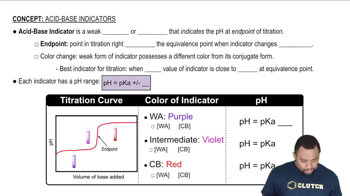Here are the essential concepts you must grasp in order to answer the question correctly.
Color Absorption and Complementary Colors
When a complex absorbs light at a specific wavelength, it appears to be the complementary color of that wavelength. For example, if a complex absorbs light at 610 nm, which corresponds to orange light, it would appear blue-green, the complementary color on the color wheel. Understanding this relationship helps predict the visible color of substances based on their absorption spectra.
Recommended video:
Photon Energy and Wavelength Relationship
The energy of a photon is inversely related to its wavelength, described by the equation E = hc/λ, where E is energy, h is Planck's constant, c is the speed of light, and λ is the wavelength. This relationship indicates that shorter wavelengths correspond to higher energy photons. For a wavelength of 610 nm, this equation can be used to calculate the energy in joules.
Recommended video:
Frequency-Wavelength Relationship
Energy Conversion to kJ/mol
To convert the energy of a single photon to energy per mole, we use Avogadro's number (approximately 6.022 x 10²³ mol⁻¹). The energy in joules for one photon can be multiplied by Avogadro's number to find the energy in kJ/mol. This conversion is essential in chemistry for relating microscopic phenomena to macroscopic quantities relevant in reactions and processes.
Recommended video:

 Verified step by step guidance
Verified step by step guidance

